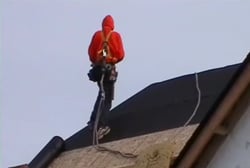A fleet of any size (simply the use of vehicles in a company or organization), is an exposure which can generate losses for the organization in all four categories: property, human resources, liability and net income. Risk managers recognize the importance of well-designed and properly implemented fleet safety programs. The new twist is that new technology and ever-changing laws require these plans to be reflective of these changes and dynamic for each individual organization.
In 2008, there were 37,261 motor vehicle fatalities and almost 2.5 million injuries in the United States, generating a more than $231 billion dollars in damages. Occupational fatalities associated with highway incidents in 2008 totaled 1,149, or about one in four of all occupational fatalities.
Every organization that uses vehicles in any manner should enforce a fleet safety program that at the minimum contains these components:
- Driver Qualification and Training
- Motor Vehicle Record (MVR) review
- Vehicle Inspection & Maintenance
- Tracking, Monitoring & Documentation
Driver Qualification and Training
Most organizations require basic state licensing and may elect to impose minimum requirements for age and experience of drivers for certain applications such as product load, people transportation etc.
Training drivers in defensive driving techniques and other fleet safety topics can be accomplished through online programming, behind-the-wheel coaching, and classroom instruction.
MVR Review
Regular evaluation of MVRs is a standard component in fleet safety programs. For MVR review to be successful, employers must consider exactly what records will be evaluated, and how they will guide employment and driving assignment decisions.
The MVR monitoring process can be outsourced to companies that provide background screening services for new and existing employees. These services monitor activity associated with fleet drivers and immediately notify fleet managers of any negative activity associated with an employee driver.
Vehicle Inspection and Maintenance
A comprehensive program for regular safety inspections and mandatory maintenance and repairs for fleet vehicles is an extremely important part of a fleet safety program that is often overlooked.
If any claim were to go to litigation, a defense attorney could take full advantage of any evidence indicating a delay in important safety precautions such as tire replacement or brake repair. Therefore, it’s not only important to stay on top of all vehicle maintenance requirements, it’s also essential to keep accurate records of maintenance and repair schedules in case it needs to be proven in court.
Tracking, Monitoring & Documentation
New technologies such as Global Positioning Systems, Ignition Interlock Devices and the onset of extensive mobile device usage has increased the need for close monitoring, highly documented policies and knowledge of the law.
Tracking Location
Global positioning systems (GPS) installed in vehicles can provide fleet owners with many useful tools to not only manage vehicle utilization, but also operational safety. These systems can measure and communicate the exact location and vehicle speed on a real-time basis to a central point. For an organization that must maximize efficiencies to survive, control speeding and other misuse of their vehicles, GPS technology used to monitor the actions of employees behind the wheel can be an important new tool to compliment a fleet safety program.
Ignition Interlock Devices
Another area of technology that is impacting fleet management policies is the use of ignition interlock devices (IIDs) by drivers convicted of DUI. These devices require the driver to blow a sample of their breath through the device before the vehicle’s ignition will start. IIDs can be court ordered for an employee convicted of DUI. The question for business owners and fleet managers is whether to allow IID installation in a company vehicle to accommodate a legal requirement imposed on an employee. It is important for fleet owners to understand the laws, and plan ahead for how they will respond to an IID order for one of their employees.
Mobile Devices
One of the most significant new challenges for fleet safety programs is managing the use of mobile devices on the road. The use of cell phones and other portable devices for talking, texting, email, social networking, and navigation while driving is now commonplace, especially among younger drivers.
The National Highway Transportation Safety Administration (NHTSA) indicates that drivers engaged in texting while driving increase their chance of being in an accident by 23 times. A troublesome reality for fleet owners is how easy it is to prove that a driver was texting at the time of an accident, due to the precise time stamp assigned to every message. These distractions must be considered and addressed in every company’s updated fleet safety policy. Every fleet owner must evaluate the communication needs of their drivers, device policies, and the law to manage that risk appropriately.
Business owners and fleet managers face a intimidating task to develop and implement fleet safety programs that comply with applicable laws and reduce risk to their property, their people and their profitability. A successful fleet safety program for your organization begins with a tailored plan that addresses the specific needs of your organization and then remains flexible enough to respond to changes in technology and the law.

 By using the DBI Sala U-Bolt Roof Anchor, a personal fall arrest system can be easily attached to a pitched roof. The homebuilder supplies this device.
By using the DBI Sala U-Bolt Roof Anchor, a personal fall arrest system can be easily attached to a pitched roof. The homebuilder supplies this device. The framing contractor attaches the anchor to a roof truss while the truss is on the ground.
The framing contractor attaches the anchor to a roof truss while the truss is on the ground. The roof anchor is easily incorporated into a contractor's use while on the roof.
The roof anchor is easily incorporated into a contractor's use while on the roof.
